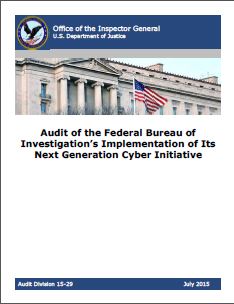- Trump Cybersecurity Advisors Resign, Citing His ‘Insufficient Attention’ to Threats (Fortune): Seven of President Trump’s advisors from the National Infrastructure Advisory Council have resigned. The members accounted for nearly a quarter of the Council and many were Obama appointees, an article said. In their resignation letter, which is included below, the seven cited to both specific cyber issues but also to ‘moral’ questions throughout the President’s broader polices. These statements echo last week’s NIAC report, which was posted here. The full article from Fortune can be read here.
[pdf-embedder url=”http://blog.cybersecuritylaw.us/wp-content/uploads/securepdfs/2017/08/082417jm1.pdf”]
-
Tentative Observations on China’s Views on International Law and Cyber Warfare (Lawfare): A recent blog post highlighted some of China’s potential views on how International Law may affect the cyber realm. The post noted that the Chinese government has not clarified any specific stance on the issue, but the media and scholars have hinted at what the nation’s views might be. The post outlined several issues from the Chinese perspective. First, they are very suspicious of efforts to set international norms, including the Tallin Manual. Another key highlight of the post is that China disagrees with the expansion of the right of self defense against cyber attacks. The full post can be read here.
-
Exclusive: India and Pakistan hit by spy malware – cybersecurity firm (Reuters): Symantec Corp has said that India and Pakistan are likely the victims of a state-sponsored cyber spying campaign. The company refused to identify who the state sponsor might be, but stressed that any government or military with operations in South Asia would be at risk from the malware. The malware used the “Ehdoor” backdoor to access computers. The full post, which further explains some of the implications of the malware, can be read here.




Leave a Reply